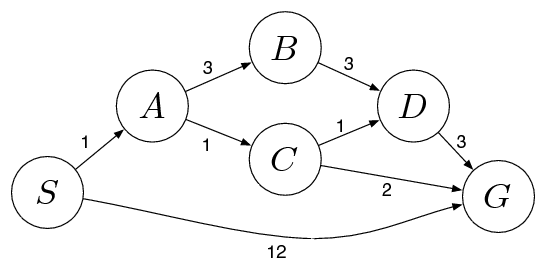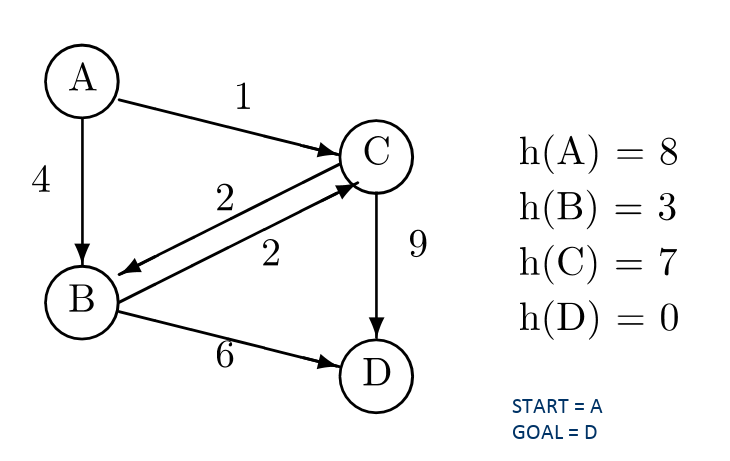
Consider a search where the start state is number 1 and the successor function for any state n returns two states: the numbers 2n and 2n + 1.
1. Draw the search tree that illustrates the state space for a search from the state 1 to the state 15
2. Say the initial state is 1 and the goal state is 11. List the order in which nodes will be visited for breadth-first search, depth-first search and iterative deepening search.
3. Would a bidirectional search be appropriate for this problem, i.e. a search that would run simultaneously forwards (from the initial state) and backwards (from the goal state)? If so, describe how this would work.
4. What is the branching factor in each direction of the bidirectional search?
A solution for this problem (revised 1/13)
Other Problems:1. Illustrate the frontier at each iteration of Uniform Cost Search for a search from the start (S) to the goal (G) for the following problem:

2. Consider the problem illustrated below. The edges are annotated with costs of transitions, and heuristic estimates of costs to get from each state to the goal is given at the right.

a. Assume we are running a-star with no cycle checking and no path checking. Assume also that in our frontier we are storing entire paths (i.e. sequences of states). Illustrate the frontier at each iteration of a-star.
b. Assume we are running a-star on the same problem with path checking only. Illustrate the frontier at each iteration of a-star. Which states are pruned?
c. Assume we are running a-star on the same problem with cycle checking. Illustrate the frontier at each iteration of a-star. Which states are pruned?
3. What happens to A* when our heursitic function estimates distances to the goal perfectly? Are we guaranteed a run time that is linear in the length of the optimal solution?